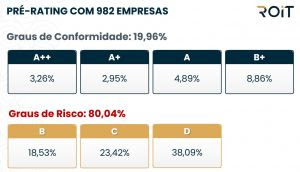The growing integration of technology and innovation in the business world has rapidly changed the way companies connect with customers and increase sales. In a scenario where options are vast and competition is fierce, technology becomes an essential ally in the search for efficient solutions. However, the biggest challenge for companies is balancing innovation with a focus on the customer's real needs, using the right tools to enhance the sales process without losing human and personalized contact. The use of technology should not be innovation for innovation's sake; it should serve a clear purpose: to generate more value for the customer and, consequently, for the company.
One of the most effective ways to integrate innovation into this process is the use of CRM (Customer Relationship Management) systems, which are essential for organizing and optimizing customer relationships. With a CRM, it is possible to customize communication, track purchase history, and understand consumer preferences, enabling more targeted sales actions. This directly translates into an increase in conversion rates, as the company is offering exactly what the customer wants, at the right time. However, it is necessary to use the CRM strategically. It is not enough to just collect data. The key lies in how the information is analyzed and applied to create richer and more engaging experiences for the consumer.
Furthermore, technology is not limited to data collection but also includes process automation. Marketing automation, for example, can be an excellent way to nurture the customer more efficiently, making them feel supported throughout their purchasing journey without the need for constant intervention. This reduces acquisition costs, improves the customer experience, and still delivers faster results. For a constantly evolving market, it is essential to adopt these innovations in a way that makes sense for the company's operations, without compromising the quality of service and product or service delivery.
However, one point that is often overlooked is that technology should not be seen as a substitute for human interaction, but as an extension of the relationship between the company and the consumer. Although automation can help save time and optimize processes, the human factor remains crucial for creating unique and memorable experiences. Technology should be used to make service faster and more personalized, allowing salespeople to have more time to focus on their clients' real needs. The combination of technological innovation with empathy and human attention can be the secret to a significant increase in sales.
Innovation and technology are therefore not just a way to modernize the company, but a true opportunity to transform it into a more agile, connected, and customer-centric organization. By strategically and balanced integrating the right digital tools, the company can improve processes, increase efficiency, and most importantly, build a loyal and satisfied customer base. In the end, the secret to selling more is not just adopting new technologies, but knowing how to use them to create amazing experiences that meet consumers' needs, creating a continuous cycle of innovation and satisfaction.












